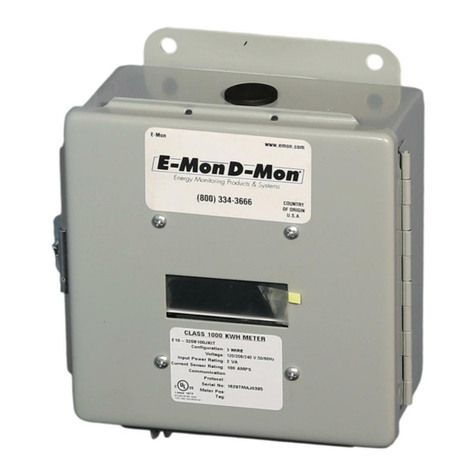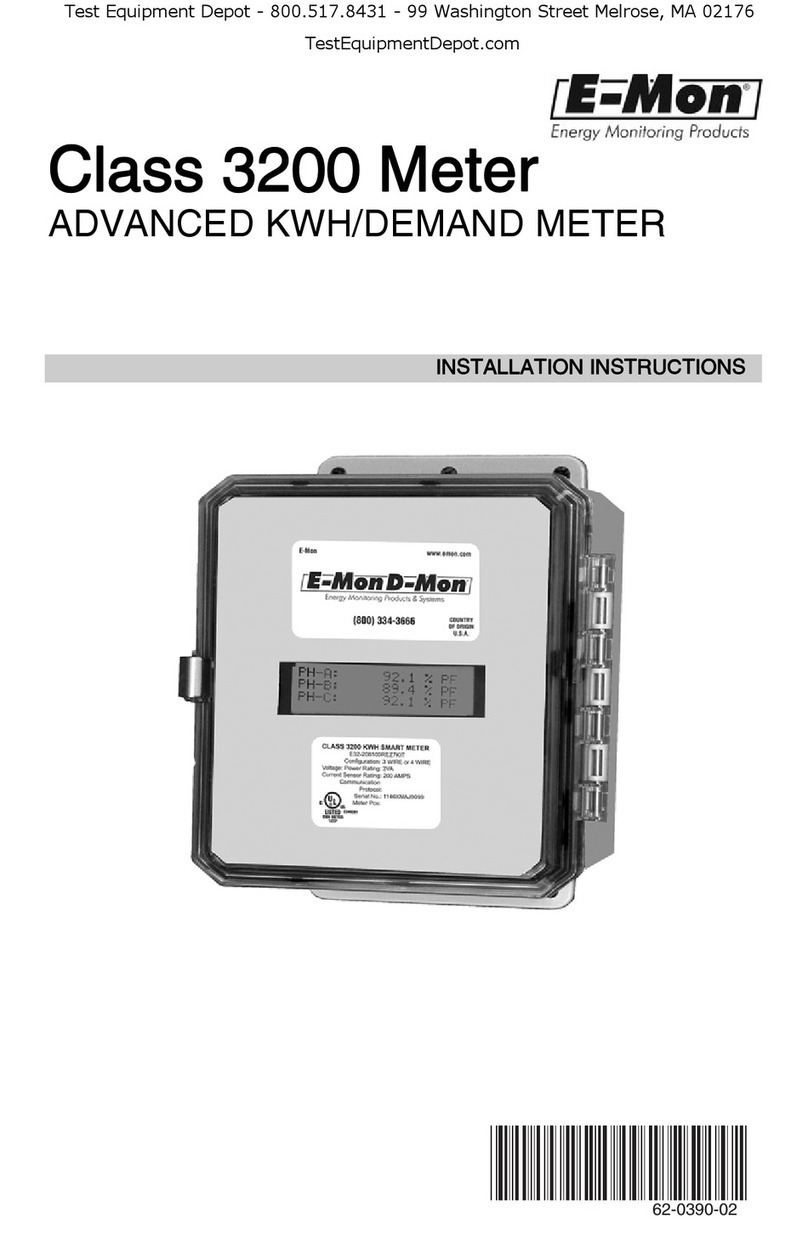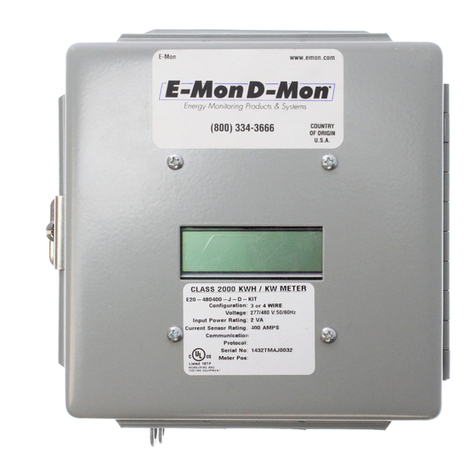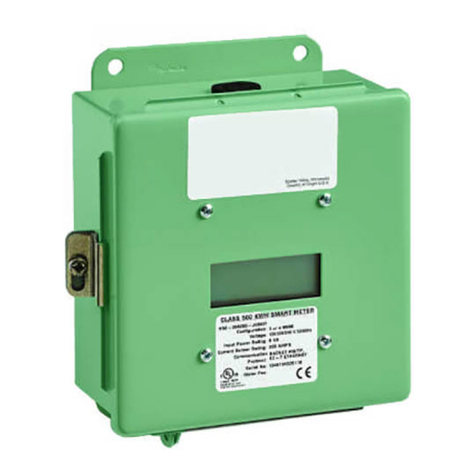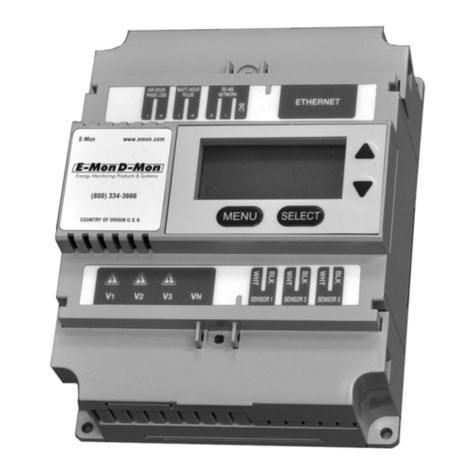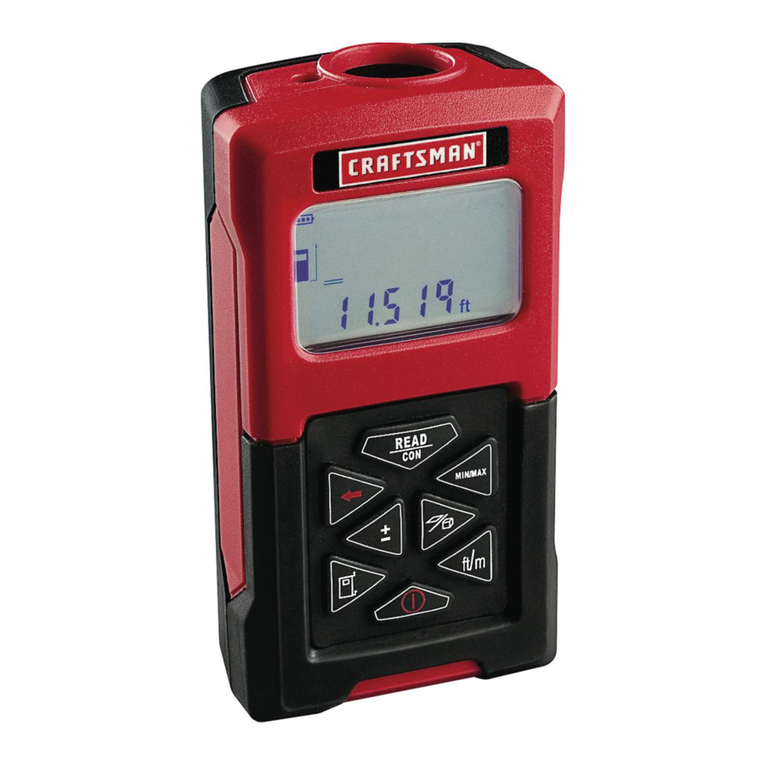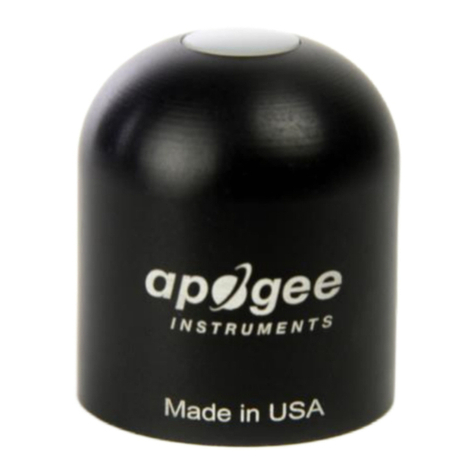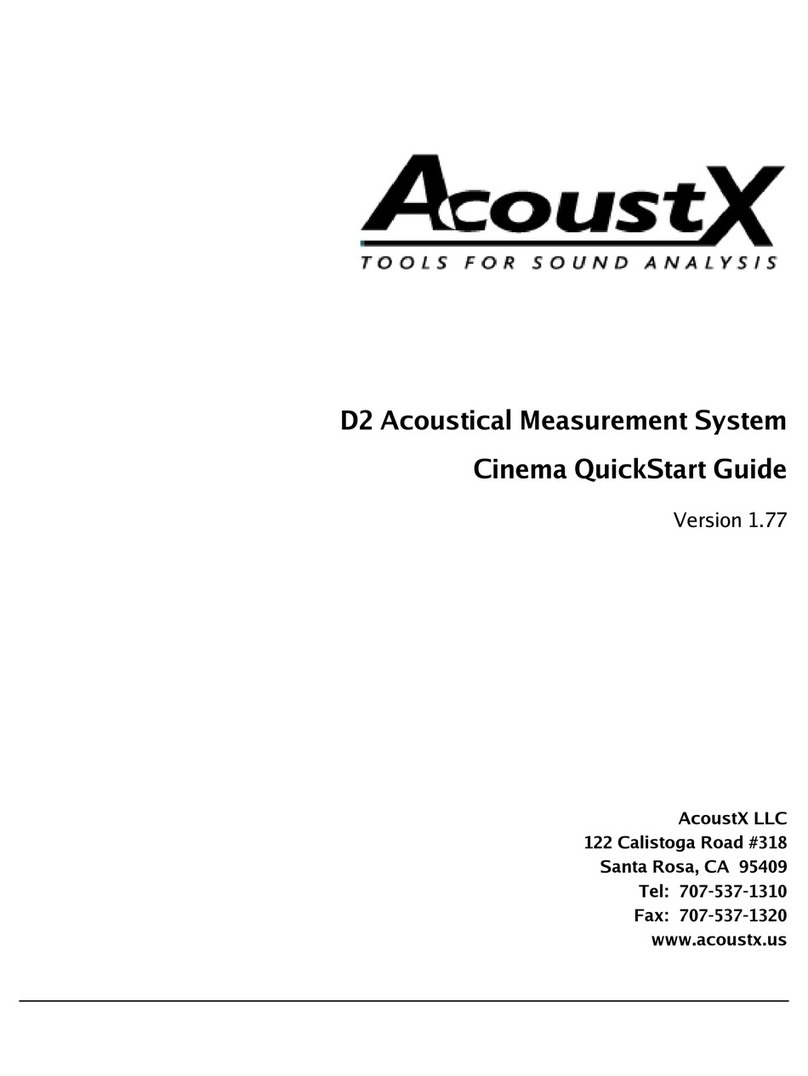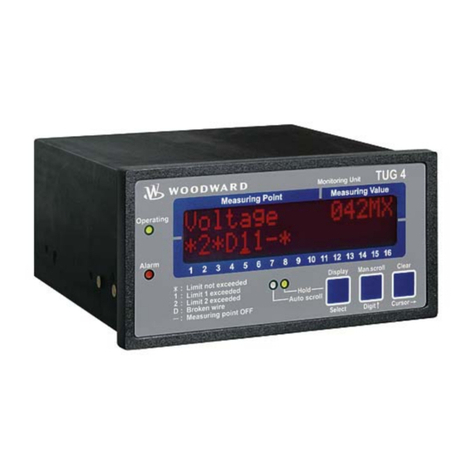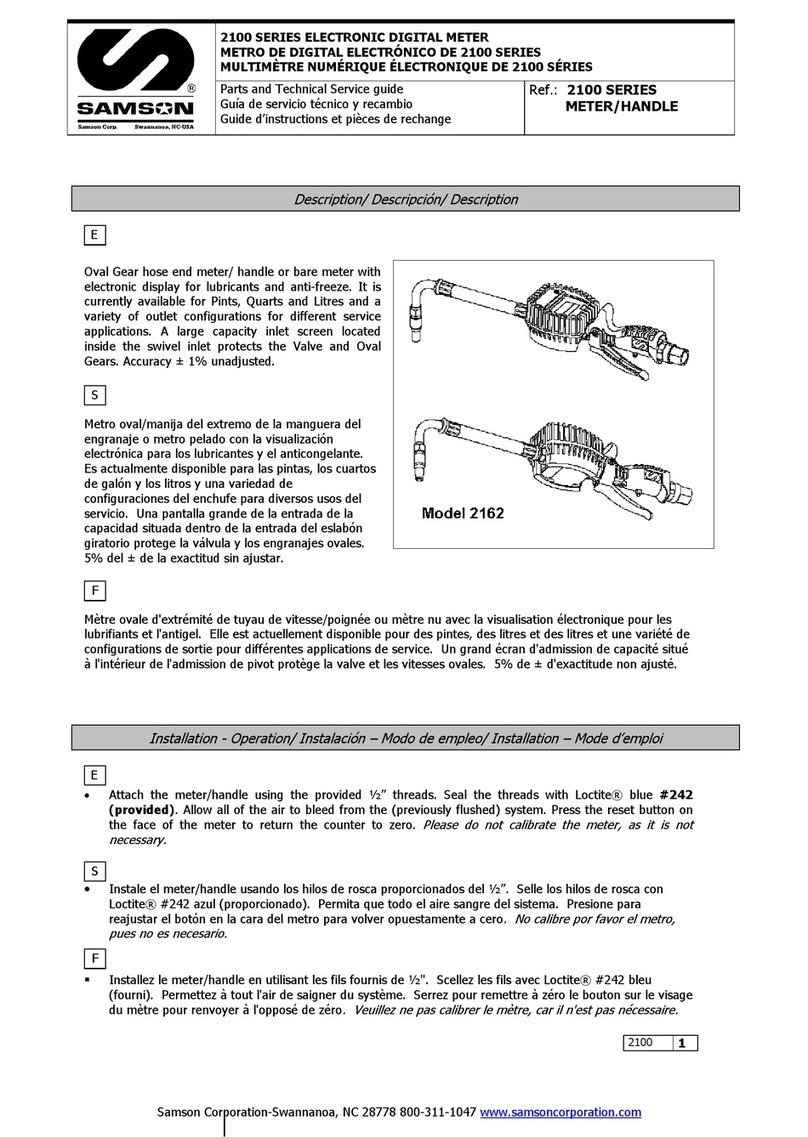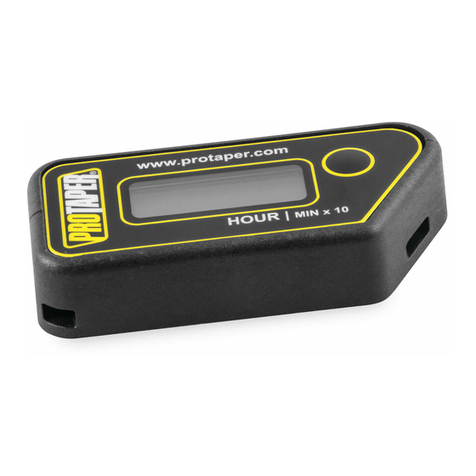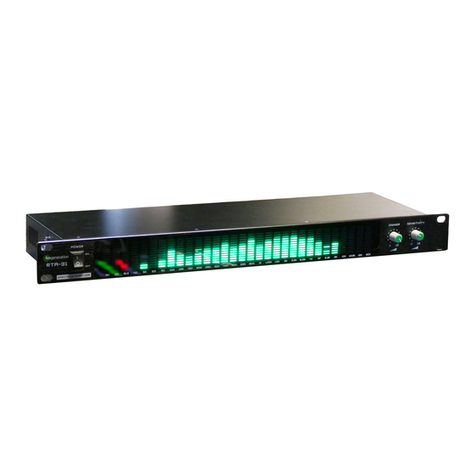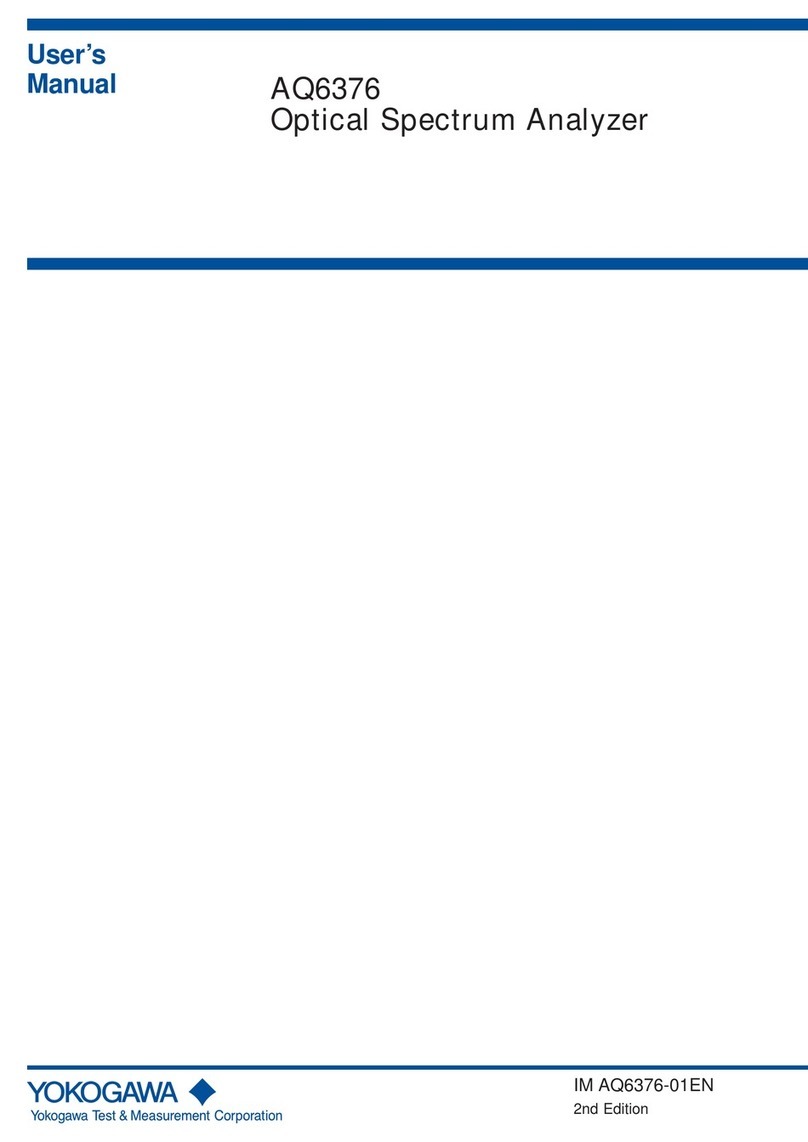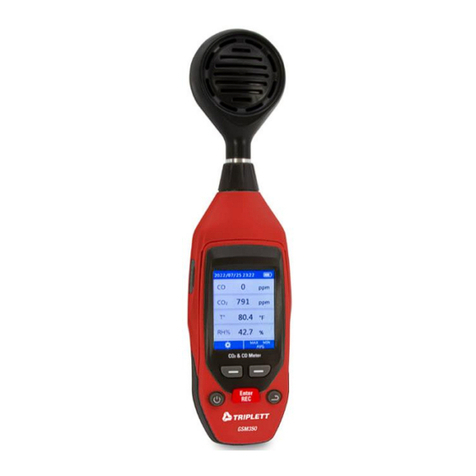E-Mon Class 3400 Meter User manual

62-0391-03
INSTALLATION INSTRUCTIONS
Class 3400 Meter
ADVANCED KWH/DEMAND METER
WITH COMMUNICATIONS
E-Mon
1985 Douglas Drive North
Golden Valley, MN 55422
www.emon.com

CLASS 3400 METER
62-0391-03 2
Dear Valued Customer,
We are pleased that you chose to buy one of our products, and want you to be just as
pleased with owning it. Before installing your new E-Mon product, please read the
information on the following pages carefully.
We believe that you will find the E-Mon D-Mon meters easy to install and to use for
monitoring and evaluating your electrical usage.
To be sure that you are 100% satisfied with your products, we provide toll-free
technical and sales support Monday through Friday, 8:00 am to 7:30 pm, EST:
If you have questions, we can handle them quickly and effectively with a telephone call.
Please let us try to help you BEFORE you remove your meter. And to help us help you,
we ask that you have all relevant information on hand when you call (model or part
numbers, nature of difficulty, etc.)
Be sure to forward this manual to the owner after installation is complete, so that they
may use it as a reference guide when reading the E-Mon D-Mon meter.
Thank you.

CLASS 3400 METER
3 62-0391-03
TABLE OF CONTENTS
Section 1.0 Introduction 4
Section 2.0 Internal Electronic Assemblies 5
Section 2.1 Main Power Board 5
Section 2.2 Display Board 6
Section 3.0 Meter Technical Specifications 7
Section 4.0 Safety Label Definitions and Information 10
Section 5.0 Precautionary/Safety Information 10
Section 6.0 Meter Installation 11
Section 6.1 Mounting the Class 3400 Meter 11
Section 6.2 Main Power Board Connections 11
Section 6.3 Phasing of Line Voltage 13
Section 6.4 Current Sensor Installation & Wiring 14
Section 6.5 Main Power & Current Sensor Wiring Diagram 16
Section 6.6 Line Voltage/Current Sensor Diagnostics 16
Section 6.7 RS-485 Wiring 18
Section 6.8 RS-232 Communications 19
Section 6.9 Modem Wiring 22
Section 6.10 Modbus RTU Wiring 25
Section 6.11 BACnet Wiring 26
Section 6.12 Connecting Class 3400 Meters to USB Key using RS485 26
Section 6.13 Ethernet Communications 27
Section 7.0 Multiple-Load Monitoring 28
Section 8.0 Preventative/Scheduled Maintenance 30
Section 9.0 Lithium Battery Replacement 30
Section 10.0 Class 3400 Meter operating Modes 32
Section 11.0 Class 3400 Meter Expansion Board 40
Section 11.1 Expansion Board Connections 41
Section 11.2 Pulse Type and Valve 42
Section 12.0 Frequently Asked Questions 43
Section 13.0 Protocol Descriptions 45
Section 14.0 High Voltage Metering 51
Section 15.0 Meter Limited Warranty 54

CLASS 3400 METER
62-0391-03 4
1.0 INTRODUCTION
The E-Mon D-Mon® Class 3400 meter is a 3-element meter with communications. The
device is used to monitor electric power usage of individual loads after the utility meter
and store kW and kVAR data for automatic meter reading. The Class 3400 meter is
dual protocol capable and provides both RS485 and Ethernet communications.
Installation must only be performed by qualified personnel and in accordance with
these instructions and all applicable local and national electrical codes. E-Mon and its
representatives assume no responsibility for damages or injury resulting from the
improper installation of this meter.
Verify the input voltage rating and configuration on the unit panel label to ensure that it
is suitable for the intended electrical service. 3400 meters labeled for 120/208V service
MUST NOT be installed on service feeds of 277/480 volts or 347/600 and vice versa.
Verify that the Class 3400 meter’s current sensors are sized suitably for the load to be
monitored. Compare the color of the arrows on the current sensors to the chart below
to confirm the correct current sensor is being used.
Meter Labeled: Works On:
120V 120V, 1 Phase
120/240V 120/240V, 1 Phase
277V 277V, 1 Phase
208V 208V, 3 Phase
240V 240V, 3 Phase
400V 400V, 380V, 415V, 3 Phase
480V 480V, 3 Phase
600V 600V, 3 Phase
Sensor Arrow Color Code Sensor Rating
Brown 100 A
Red 200 A
Yellow 400 A
Black 800 A
Blue 1600 A
White/Black 3200 A

CLASS 3400 METER
5 62-0391-03
CAUTION
Internal circuit card components are extremely sensitive to electrostatic
discharge. Prior to handling or touching internal circuitry, discharge any
static buildup on your person. To discharge yourself, touch a grounded
metal object such as conduit or an earth grounded metal enclosure.
WARNING
Use of this instrument, the E-Mon D-Mon Class 3400, in a manner
inconsistent with this manual or not specified by the manufacturer in
writing, can cause permanent damage to the unit and/or serious injury to
the operator. The protection and safety features provided by this
equipment may become impaired or otherwise compromised.
NOTE: If any trouble arises during installation or functional verification opera-
tions, do not immediately remove unit. Before removing the unit, con-
tact E-Mon’s technical support department at (800) 334-3666. E-Mon’s
technical department will assist you in detailed troubleshooting of the
Class 3400 installation and assist you in getting the unit operating cor-
rectly.
2.0 INTERNAL ELECTRONIC ASSEMBLIES
The units are comprised of two major subassembly boards, the main power board and
the display board. Both circuit boards are mounted inside a NEMA 4X enclosure.
Fig. 1. Internal Electronic Assemblies.
MAIN POWER
BOARD
DISPLAY
BOARD
M33315

CLASS 3400 METER
62-0391-03 6
2.1 Main Power Board
Connections to this board include the MAIN Power Input and current sensors.The
MAIN Power Input terminals are positions one through four on the four position screw
terminal block, TB1. These terminals are covered with a protective shield for safety
purposes. The current sensor assemblies interface to the TB1 positions 6 thru 10; care
must be exercised to ensure that each current sensor is connected to the correct
terminals. One three terminal screw connector (RS485) is for RS-485 communications.
One two terminal screw connection (output) is for a pulse output. One RJ-45 jack (J8)
is provided for 10/100-baseT Ethernet.
Fig. 2. Main Power Board Connections.
2.1 Main Power Board
When ordered, header J3 is 20 positions for use with an I/O board with up to two
relays, two pulse inputs and two pulse out puts. Meters ordered with the X (Expanded
Feature) package have the I/O board pre installed.
M33271
J3
J4
TB1
POSITIONS 1-4
MAIN POWER INPUT
TB1 POSITIONS 6-10
CURRENT SENSOR
INPUTS
ETHERNET
CONNECTION
RS-485
CONNECTION
PHASE OUTPUT

CLASS 3400 METER
7 62-0391-03
2.2 Display Board
The display board connects to the main power board via a flex ribbon cable and the
board mounts on the inside of the housing door.No additional connections to the
display board are required. The display board’s LCD readout indicates the metered
values as well as errors associated with the Class 3400 meters, such as phase loss or
sensor error conditions.
Fig. 3. Display Board.
M33320
DOWN
UP SELECT
MENU

CLASS 3400 METER
62-0391-03 8
3.0 METER TECHNICAL SPECIFICATIONS
Ordering Information: Define brand, class, input voltage, current sensor rating,
enclosure, protocols/options, expanded feature package, and sensor type in the format
A-BB-CCC-DDDD-E-FF-G-HHH, where:
A = Brand: E for E-Mon
BB = designates Class: 3200 (32), 3400 (34), or 5000 (50) meter
CCC = input voltage: (208, 480, 600, 120 volt for high voltage applications only)
DDDD = current sensor rating: (100, 200, 400, 800, 1600, 3200, 25HV)
E = enclosure: J = metal (type 1), R = non-metallic (type 4X)
FF= protocol option:
G = Expanded Feature Package: package = X, no package = “blank”
SP = Single or Two Phase
HHH= Sensor Type: kit=split-core, scs= solid-core, non-supplied blank”
Brand
Class
Voltage
Amperage
Enclosure
Communication
Protocol
Current
Sensor/Option
Current
Sensor/Option
Current
Sensor/Option
Example E 34- 208 100- J 03 KIT
E34-208100-J03KIT
Brand E-Mon
Class 3400
Voltage 120, 208, 400 (380-415), 480, 600
Amperage 2HV, 100, 200, 400, 800, 1600, 3200
Enclosure J (JIC Steel), I (Interior only), R (Rain tight)
Communication
Protocol
01 (EZ-7, EZ-7 ETHERNET),
02 (MODBUS RTU, EZ-7 ETHERNET),
03 (BACNET MSTP, EZ-7 ETHERNET),
04 (EZ-7, MODBUS TCP/IP),
05 (EZ-7, BACNET IP),
06 (MODBUS RTU, MODBUS TCP/IP),
07 (LONWORKS TP,EZ-7 ETHERNET),
08 (LONWORKS TP, MODBUS TCP/IP),
09 (EX-7, EZ-7 ETHERNET WITH MODEM),
10 (EZ-7, MODBUS TCP/IP WITH MODEM),
11 (EZ-7, BACNET IP WITH MODEM)
Current Sensors/
Options
-X- (EXPANDED FEATURE PACKAGE), KIT (Split Core),
SCS (Solid-Core), -SP (Single or Two Phase - 2 element)

CLASS 3400 METER
9 62-0391-03
3.0 METER TECHNICAL SPECIFICATIONS
(CONTINUED)
Input Voltage
Configuration
3-wire (Delta) Or 4-wire (Wye)
Mains Voltage Input Up To 600 VAC RMS Available
Input Power 6 VA Maximum Rating
Current Sensor
Rating
Up To 3200 Amps RMS AC Available
Power Factor 0.5 Leading Or Lagging
Line Frequency 50-60 Hz
Metering Accuracy ANSI C12.20
Voltage Operating
Range
+/-10% Of Rated Load
Temperature Range -20 C To +50 C (Standard indoor enclosure):
Relative Humidity
Range
0-95% Non-condensing
Altitude 2000 Meters Maximum
Voltage Overload +25% Continuously: +100% For 20 Cycles
Current Sensor
Overload
100% For 1 Minute Without Damaging Meter
Pollution Degree Degree 2 In Accordance With IEC 664
Installation
(Overvoltage)
Category
Category III
Measurement
Category
Category III
Enclosure Material UL Type 1 JIC Steel or Type 4X Plastic Rain Tight
Display Readout 4-line LCD
Standard Ranges 2-Wire Delta 120 VAC: 100, 200, 400, 800,1600, 3200 Amp
4-Wire Wye 120/208 VAC: 100, 200, 400, 800,1600, 3200 Amp
3-Wire Delta 120/240 VAC: 100, 200, 400, 800,1600, 3200 Amp
4-Wire Wye 277/480 VAC: 100, 200, 400, 800,1600, 3200 Amp
2-Wire Wye 277 VAC: 100, 200, 400, 800,1600, 3200 Amp
4-Wire Wye 400 VAC: 100, 200, 400, 800,1600, 3200 Amp
3-Wire Delta 480 VAC: 100, 200, 400, 800,1600, 3200 Amp
4-Wire Wye 600 VAC: 100, 200, 400, 800,1600, 3200 Amp
Modem Interface Cable: UL-listed/rated telephone cord, 4-
conductor, 300 VAC, stranded
conductors 22-26 AWG.
Cable Connector: RJ-11 IDC termination
Ckt Input Isolation 5.3K VAC
Baud Rate: 9600

CLASS 3400 METER
62-0391-03 10
3.0 METER TECHNICAL SPECIFICATIONS
(CONTINUED)
RS-485 Serial
Communications
Cable: UL-listed stranded conductors,
22-26 AWG.
Input/Output Voltage: Ground-isolated +/-5.4VDC
Cable Connector: Screw terminal termination
Circuit Input Isolation: 5.3kVAC
Max Cable Distance: 4000 feet
Max Network Nodes: 64 cabling nodes (including
master)
Baud Rate: 9600
Ethernet
Communications
Cable
Cable: UL-Listed CAT-5e cable, 8-
conductor, stranded 24 AWG
Cable Connector: RJ-45 termination
protocol: 10/100 base T
Cable Distance: 450 feet
Load Control
Contacts:
Contact Closure: Set by user
Contact Rating: 28Vdc@10A; 240VAC@10A
Mating Connector: Weidmuller PN 1526510000
Isolation Voltage: 1.5K VAC for 1 minute
Recommended
In-line Fuse
Manufacturer: Littlefuse
Mfg. Part No: KLDR.100
Rating: 100mA, time-delay, 600VAC
cartridge fuse
Battery Cell Description: Non-rechargeable cell used for
memory retention
Manufacturer: Panasonic
Mfg Part No: CR2032
Working Voltage: 3 Vdc
Current Capacity: 225 mAHr
Electrolyte: Manganese Dioxide Lithium

CLASS 3400 METER
11 62-0391-03
4.0 SAFETY LABEL DEFINITIONS AND
INFORMATION
The Class 3400 meter may contain one or more of the following labels. Operator(s)
should familiarize themselves with the meaning of each label to minimize risk.
FCC Notice
This equipment has been tested and found to comply with the limits for a Class B
digital device, pursuant to part 15 of the FCC Rules. These limits are designed to
provide reasonable protection against harmful interference in a residential installation.
This equipment generates, uses and can radiate radio frequency energy and, if not
installed there is no guarantee that interference will not occur in a particular
installation. If this equipment does cause harmful interference to radio or television
reception, which can be determined by turning the equipment off and on, the user is
encouraged to try to correct the interference by one or more of the following measures:
- Reorient or relocate the receiving antenna.
- Increase the separation between the equipment and receiver
- Connect the equipment into an outlet on a circuit different from that to which the
receiver is connected.
- Consult the dealer or an experienced radio/TV technician for help.
Standards Compliance:
BACnet MS/TP and IP protocol is BTL listed.
LonWorks TP/FT-10 protocol is LonMark® certified.
The presence of this label is a cautionary indicator identifying a
danger risk. The manual should be consulted prior to proceeding.
The presence of this label indicates an electrical shock hazard exists
in the location or area where the label is placed. Prior to proceeding,
the MAINS power must be disconnected and the manual consulted for
safety information.

CLASS 3400 METER
62-0391-03 12
5.0 PRECAUTIONARY AND SAFETY
INFORMATION
CAUTION
Internal circuit card components are extremely sensitive to electrostatic
discharge. Be careful not to touch internal circuitry prior to discharging
any static buildup on your person. To discharge yourself, touch a
grounded metal object such as conduit or an earth-grounded metal
enclosure.
WARNING
High voltages present on main PCB terminal block TB1 screw terminals.
Risk of serious injury and/or electrical shock exists. Prior to performing
any wiring operations, review all contents of the user manual and de-
energize the MAINS power switch. Only qualified personnel should
perform installation wiring. Installation wiring must comply with all local
and national electrical codes.
WARNING
Failure to ground the enclosure creates a possible shock hazard. Do not
operate the Class 3400 meter without a protective earth wire attached
securely to the PE terminal screw. After installing protective earth wiring,
secure the screw tightly (7 N-m torque.)
WARNING
NEVER open front panel of unit while unit has MAINS power applied.
Failure to comply can increase the risk of serious injury and/or electrical
shock.

CLASS 3400 METER
13 62-0391-03
6.0 METER INSTALLATION
6.1 Mounting the Class 3400 Meter
Use appropriately sized mounting hardware to fasten the meter enclosure to the
selected mounting surface. The four housing mounting holes are centered 8.75” H x 4”
W for the CL3400.
NOTE: Meters supplied in plastic NEMA 4X enclosures and NEMA JIC Steel
Enclosures (UL Type 1) enclosures must be installed indoors.
6.2 Main Power Board Connections
1. Installing a temporary ground for ESD protection:
With all circuits de-energized, connect a temporary protective earth ground con-
nection for ESD protection. Prior to performing any unit wiring, be sure to dis-
charge any static on your person.
2. Installing the Class 3400 protective earth ground:
Connect an earth ground wire to the Class 3400 protective earth ground lug with
a torque of 7 N-m.
M34684
6-35/64 (166)
6-35/64
(166)
5/8 (16)
7-51/64
(198)
3-17/64 (83)
1-5/8
(41)
3-25/64
(86)
Ø 1-3/32 (28) THROUGH
NEAR SIDE ONLY

CLASS 3400 METER
62-0391-03 14
WARNING
Failure to attach the protective earth ground wire securely to the meter
creates a potential shock hazard. Do not operate the meter without a
protective earth ground connection securely installed.
3. Wire Entry:
CL3400 meters are supplied with two 3/4” conduit K.O.s on the bottom of the 4X
enclosure for all wiring. The Type1 enclosures are supplied with three 3/4” con-
duit K.O.s.
Route the appropriate cabling to and through the respective enclosure opening.
After installing the conduit fitting and conduit, verify that each conduit slip nut is
securely tightened to its respective conduit fitting. Any unused openings must be
sealed with a UL rated plugging device suitable for the rating of the enclosure.
4. Unit MAINS Wiring:
The first four positions of terminal block TB1, located at the bottom left corner of
the main power board, are clearly labeled Phase A, B, C, N (neutral). Earth
Ground MUST be connected to the PCB mounting screw in the lower right cor-
ner.
Connect the NEUTRAL wire to the appropriate terminal block position.
Fig. 4. Terminal Block TB1.
NOTE: For 3-wire delta-type applications, do NOT connect the neutral wire.
Remove the terminal block screw for this position.
a. Connect the NEUTRAL wire to the appropriate terminal block position.
b. Earth Ground: Connect the Earth Ground to the PCB mounting screw in the
lower right corner.
c. External Switch Mechanism/In-Line Fuse Installation
To ensure a safe installation, the Class 3400 meter requires an external
switch mechanism, such as a circuit breaker, be installed on the meter’s
MAINS input wiring. The switch mechanism must be installed in close prox-

CLASS 3400 METER
15 62-0391-03
imity to the meter and easily reachable for the operator. This device must
also be marked as the disconnecting device for the Class 3400 meter. Install
1/10 Amp Slow Activation in-line fuses with the suitable voltage rating for
each conductor phase at the MAINS input to the meter. The fuses must be
labeled to indicate voltage and current rating as well as element characteris-
tics.The fuse element must be slow activating type.
d. Connect the three AC main power wires (Phases A, B and C) to their respec-
tive positions as labeled on terminal block TB1 and tighten to 7 in-lb. After all
conductors are connected to each of their respective terminal block positions
and tightened down, verify that each terminal block screw is securely fas-
tened by gently tugging on each conductor.
NOTE: On Single phase (order “-SP” option) connections: Connect two AC
main power wires to phases A and B - Connect jumper from B to C - factory
installed option. Verify that no conductor wires are frayed or shorting to adja-
cent terminal block positions.
e. Turn ON the AC main power input. The meter display will light up and scroll
through 7 displays. Each display is visible for 5 seconds. Display screens are
as follows:
Screen 1 - Total kilowatt-hours (kWh) consumed
Screen 2 - Peak demand (kW) with date & time stamp
Screen 3 - Actual load (kW)
Screen 4 - Average current (amps) per phase
Screen 5 - Average voltage (volts) per phase
Screen 6 - Average voltage phase to phase
Screen 7 - Power factor (PF) per phase

CLASS 3400 METER
62-0391-03 16
6.2 Main Power Board Connections (continued)
f. Verify the voltage readings on Screen 5 using an AC voltmeter. Typical read-
ings shown below are measured phase to neutral for 4 wire and phase to
phase for 3 wire. Readings should be +/- 10% of nominal.
NOTE: Meters are powered by phases A and B. The displayed voltages will be
the measured AC voltage between phases.
6.3 Phasing of Line Voltage
The 3-phase AC power input or single-phase option must be in proper phase
sequence. If the sequence is incorrect or a phase is missing, there will be a message
on the meter’s display: “PH Sequence Error” or “PH Missing:. (Refer to the section on
Line Voltage Diagnostics if this message is present.) When the line voltage is
connected correctly, the meter’s display will be blank (no message.)
Wait for the meter display to scroll to the voltage display. Verify that the meter reads
correct voltages on all three phases. Repeat Step F.
Once the meter displays the correct line voltages and there are no error messages,
you are ready to connect the current sensors to the meter. Before continuing with the
installation, verify that the six screens display as follows:
Screen 1 (kWh): Should read 0.0 kWh; if not, should be reset.
Screen 2 (kW Peak Demand): kW peak should read 0.0 kW. There will not be a date/
time stamp yet. If there is a kW peak recorded, it
should be reset later
Screen 3 (kW Load): Should read 0.0 kW load.
Screen 4 (Amps per Phase): There should be 0.0 on all three phases.
Or in the SP option - 0.0 in A and B phases.
Screen 5 (Average AC Volts): See Step F.
Screen 6 (Average AC Volts): See Step F.
Screen 7 (Power Factor): There should be 0.0 PF on all three phases.
Or in the SP option - 0.0 in A and B phases.
Meter Type Nominal Voltage Limits (+/- 10%)
120/208V, 3ø, 4 Wire
120/240V, 1ø, 3 Wire
120V, 1ø, 2 Wire
120 VAC (L-N) 108 to 132 VAC
277/480V, 3ø, 4 Wire
277V, 1ø, 2 Wire
277 VAC (L-N) 249 to 305 VAC
240V, 3ø, 3 Wire 240 VAC (L-L) 216 to 264 VAC
400V, 3ø, 4 Wire 230 VAC (L-N) 207 to 253 VAC
480V (380, 415), 3ø, 3 Wire 480 VAC (L-L) 432 to 528 VAC
600V, 3ø, 4 Wire 347 VAC (L-N) 312 to 380 VAC

CLASS 3400 METER
17 62-0391-03
NOTE: The meter will be reset later via the software during “startup” proce-
dures.

CLASS 3400 METER
62-0391-03 18
6.4 Current Sensor Installation & Wiring
Once the AC voltages have been confirmed to be within acceptable limits, you are
ready to install the current sensors. TB1, positions 5 and 6 are the inputs for Phase A,
TB1 positions 7 and 8 are the inputs for Phase B and TB1 positions 9 and 10 are the
Phase C inputs.
The Single-Phase option use TB1 pos 5&6 are A - TB1 pos 7&8 are B phase -factory
installed jumper wire on positions 9&10. Factory installed jumper should not be
removed.
The Class 3400 meter can be used with two types of 0-2V current sensors.
1. Split-core current sensor. This sensor opens so that it can be attached around
the circuit being monitored without interrupting power. Unless otherwise speci-
fied, all Class 3400 meters are supplied with this sensor type.
2. Solid-core current sensor. This sensor does not open and requires the monitored
conductor to be removed from the circuit to install the current sensor. This type is
only supplied when specified at time of order.
6.4.1 Installing the Split-Core Current Sensor Assembly
1. Each phase being monitored will require one two-piece current sensor assembly.
Open the two-piece current sensor assembly by releasing the nylon clamp using
a flathead screwdriver.
Fig. 5. Split Core Sensor.
2. Reassemble the current sensor assembly around the conductor(s) to be moni-
tored. Ensure the current sensor halves marked “Load” are both facing the load
side of the conductor. The colored arrow will be on the source side of the con-
ductor being monitored and MUST be pointed in a clockwise direction around the
conductor being monitored. Tighten the nylon clamp to complete the assembly.
Fig. 6. Split Core Sensor.
M33213
LOAD
SOURCE

CLASS 3400 METER
19 62-0391-03
IMPORTANT:
When looking from the source side of the conductor(s) being monitored, you
should see the arrow on the current sensor assembly. The arrow should be
pointing in a clockwise direction around the conductor(s) being monitored. If
the arrow is not positioned on the source side, inaccurate readings will result.
6.4.2 Current Sensor Wiring
Once the current sensors are installed onto their appropriate phase conductors, you
can begin terminating the current sensors onto the Class 3400 main board. The
current sensors can be extended up to 500 feet for remote monitoring applications. To
extend the length of the wires, use #22 AWG twisted-pair wire with one white and one
black wire.
The easiest way to connect the current sensors is to use the meter’s built-in current
sensor diagnostics. To do this, there must be at least 1% of the meter’s current rating
(amps) flowing in each of the conductors being monitored. The Class 3400 meter’s
diagnostic program will provide data to ensure that the current sensor installation is
done properly.
The current sensor connection points are located at the bottom right of the main power
board. These are terminals 5 through 10 of terminal block TB1. Each sensor connects
to two terminals one labeled “Black” and the other “White.” Current sensors should be
connected to the meter one at a time and verified using the current sensor diagnostic
program.
Connect one of the current sensors to TB1 terminals 5 and 6 (Phase A). Wait 5
seconds and look at the meter display.
If the meter displays an error message (see below), remove the wires from terminals 5
and 6 and install them on terminals 7 and 8 (Phase B). if an error message occurs with
the sensor attached to terminals 7 and 8, try again on terminals 9 and 10 (Phase C).
The “CT Error:“msage will disappear when the current sensor is connected to the
correct terminals (phase).
Error Messages: CT ERROR: A
CT ERROR: A B
CT ERROR: A C
NOTE: The Single-Phase option will only display errors for A and B.
Refer to the section on Current Sensor Diagnostics for assistance in troubleshooting
these errors.
6.4.3 Main Power
After the meter circuit wiring has been examined for correctness, power may be
applied to the circuit board. There are three LEDs located in the upper right corner of
the Meter Board labeled BEAT, STATUS and LOAD. The BEAT and STATUS LEDs will
blink once per second when the meter is operating normally, twice per second if there
is a problem.If the monitored circuit is under load the LOAD LED will actively blink. A
heavy load will cause the LED to blink faster than a light load. Very light loads will
result in an extended blink time.

CLASS 3400 METER
62-0391-03 20
6.5 Main Power & Current Sensor Wiring Diagram
Fig. 7. Current Sensor Wiring Diagram.
Fig. 8. Single-Phase, 3-Wire Installation Diagram.
W B W B W BN
LINE VOLTAGE CURRENT SENSORS
N
LOAD SOURCE
M34369
3-PHASE INSTALLATION DIAGRAM
NOTES:
LINE VOLTAGE CONNECTIONS: #14-22 AWG
SENSOR CONNECTIONS: W = WHITE LEAD B = BLACK LEAD
NEUTRAL NOT USED IN DELTA SYSTEM.
LITTLEFUSE PART NUMBER KLDR.100.
1/10A 600 VAC INLINE FUSE PER CONDUCTOR. LITTLEFUSE PART
NUMBER KLDR.100.
1
111
LINE VOLTAGE CURRENT SENSORS
ØA
ØB
ØC
W B W B W B
A B N
LOAD SOURCE
A
N
B
Ø Ø
M34842
TERMINAL BLOCK LOCATED INSIDE METER
RECOMMENDED FUSES OR CIRCUIT BREAKER PER THE NATIONAL
ELECTRICAL CODE (METER LOAD 6VA.)
CURRENT SENSORS INSTALLED ACCORDING TO INSTRUCTIONS.
INSTALL JUMPER WIRES.
1
2
3
113
2
2
ØC
3
Other E-Mon Measuring Instrument manuals
Popular Measuring Instrument manuals by other brands
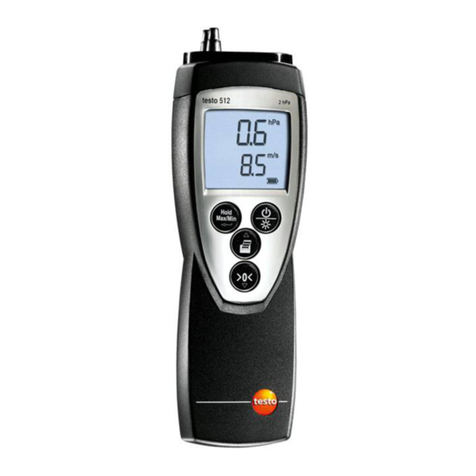
TESTO
TESTO 512 instruction manual
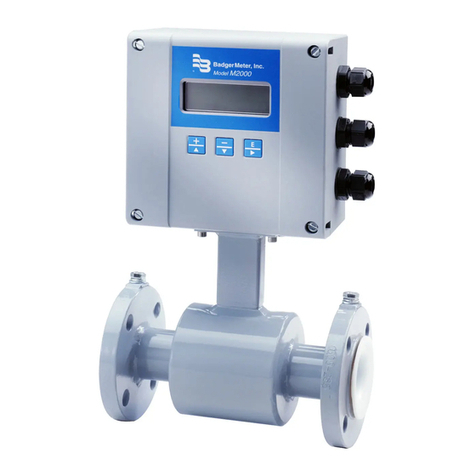
Badger Meter
Badger Meter ModMAG M2000 Installation and operation manual

Sierra
Sierra InnovaMass i Series Preliminary Instruction Manual
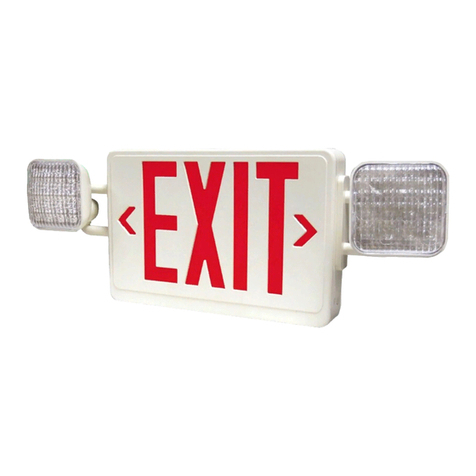
Utilitech
Utilitech CMG-102 Care and maintenance
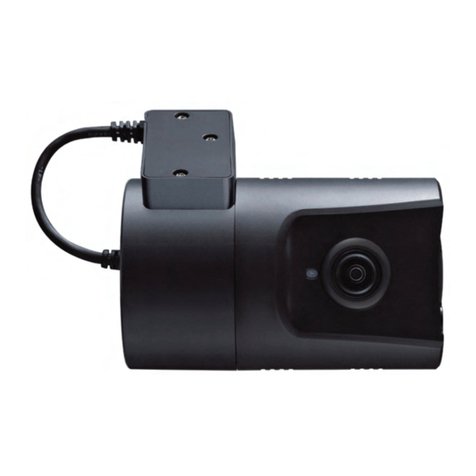
Fleet Focus
Fleet Focus FF2000 user guide

Rosemount
Rosemount 8750WA Quick installation guide

